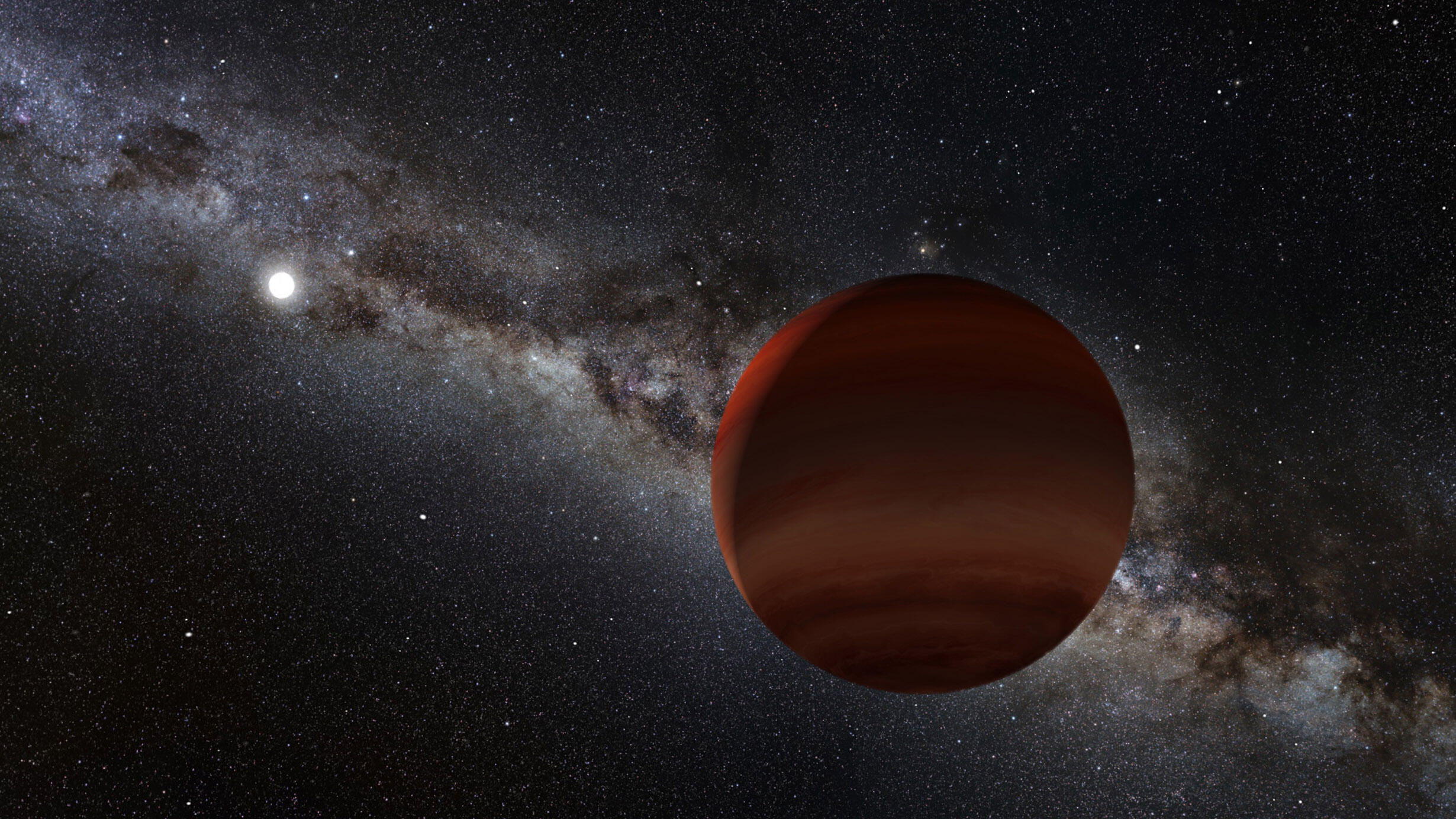 Artist’s impression of one of the study’s discoveries, the oldest known wide-separation white dwarf and cold brown dwarf pair.
Artist’s impression of one of the study’s discoveries, the oldest known wide-separation white dwarf and cold brown dwarf pair.Courtesy of NOIRLab/NSF/AURA/P. MarenfeldConcept by William Pendrill
Astronomers and a team of data-sleuthing volunteers have discovered about 100 cool worlds near the Sun—objects more massive than planets but lighter than stars, known as brown dwarfs. Several of these newly discovered worlds are among the very coolest known, with a few approaching the temperature of Earth—cool enough to harbor water clouds.
“This paper is evidence that the solar neighborhood is still uncharted territory and citizen scientists are excellent astronomical cartographers,” said co-author Jackie Faherty, a senior scientist in the Museum’s Department of Astrophysics.
The newly unearthed brown dwarfs were spotted by participants in the NASA-funded Backyard Worlds: Planet 9 project, which the Museum co-founded. The findings then confirmed using archival data supplied by the National Science Foundation’s NOIRLab facilities. The results, to be published this week in The Astrophysical Journal, demonstrate the rapidly growing role of survey and archival data research in astronomy today.
Courtesy of Aaron Meisner
When it comes to mass, brown dwarfs lie somewhere between planets and small stars, with the lowest mass brown dwarfs looking very similar to the gas planet Jupiter. Lacking the mass needed to sustain nuclear reactions in their core, brown dwarfs resemble cooling embers. Their low mass, low temperature, and lack of internal nuclear reactions make them extremely faint—and therefore extremely difficult to detect. Because of this, when searching for the very coolest brown dwarfs, astronomers look for objects relatively close to the Sun. The closest of the new discoveries is about 20 light-years away from the Sun, with many more in between 30 and 100 light-years away.
Brown dwarfs are expected to cool as they age, passing from near-stellar temperatures down to planetary temperatures and below, fading until eventually winking out. The new discoveries attest to this picture by uncovering elusive examples of brown dwarfs approaching Earth-temperature, and filling in a previous gap in the range of low-temperature brown dwarfs.
“Mapping the coldest brown dwarfs down to the lowest masses gives us key insights into the low-mass star formation process while providing a target list for detailed studies of the atmospheres of Jupiter analogs,” Faherty said.
Backyard Worlds volunteers have already discovered more than 1,500 cold worlds near the Sun, and 20 citizen scientists are listed as co-authors on this newest study.
“It’s awesome to know that our discoveries are now counted among the Sun’s neighbors and will be targets of further research,” said citizen scientist and paper co-author Jim Walla.